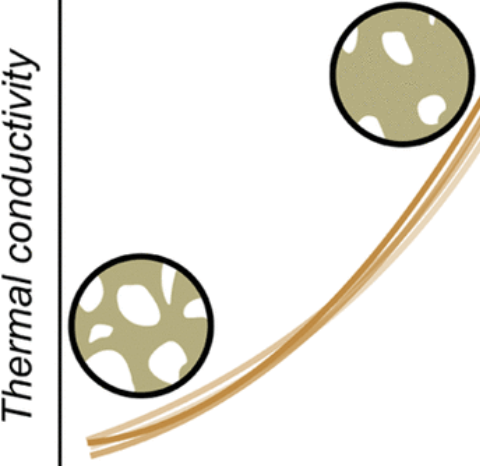Abstract
Solid electrolytes and solid-state batteries have gathered attention in recent years as a potential alternative to state-of-the-art lithium-ion batteries, given the promised increased energy density and safety following the replacement of flammable organic electrolytes with solids. While ongoing research focuses mainly on improving the ionic conductivities of solid electrolytes, little is known about the thermal transport properties of this material class. This includes fundamental studies of heat capacities and thermal conductivities, application-oriented investigations of porosity effects, and the modeling of the temperature distribution in solid-state batteries during operation. To expand the understanding of transport in solid electrolytes, in this work, thermal properties of electrolytes in the argyrodite family (Li6PS5X with X = Cl, Br, I, and Li5.5PS4.5Cl1.5) and Li10GeP2S12 as a function of temperature and porosity are reported. It is shown that the thermal conductivities of solid electrolytes are in the range of liquid electrolytes. Utilizing effective medium theory to describe the porosity-dependent results, an empirical predictive model is obtained, and the intrinsic (bulk) thermal conductivities for all electrolytes are extracted. Moreover, the temperature-independent, glass-like thermal conductivities found in all materials suggest that thermal transport in these ionic conductors occurs in a nontextbook fashion.
